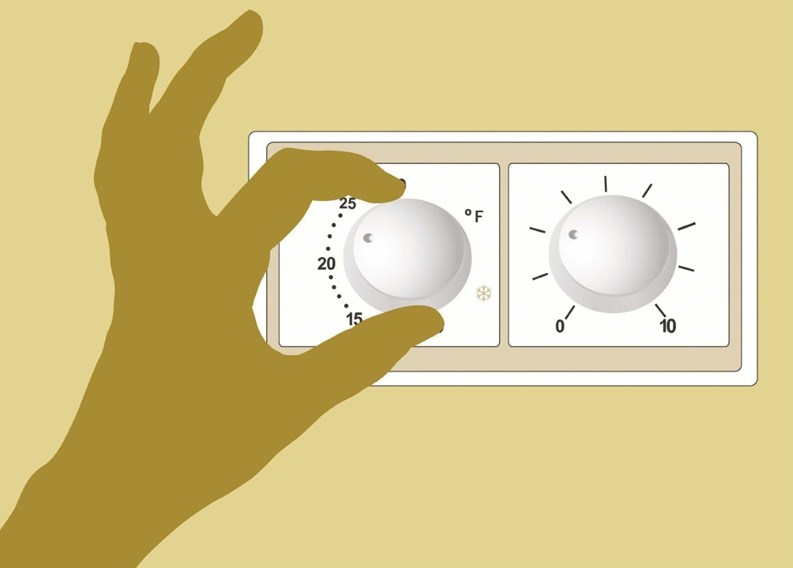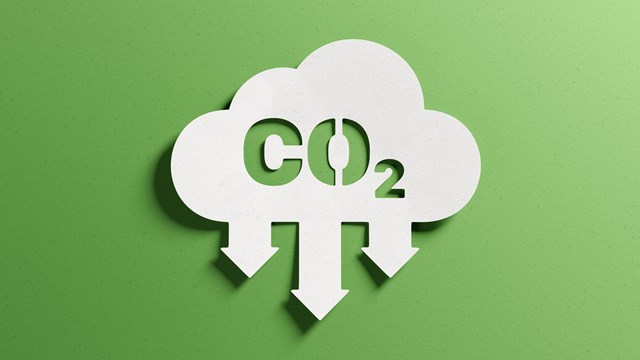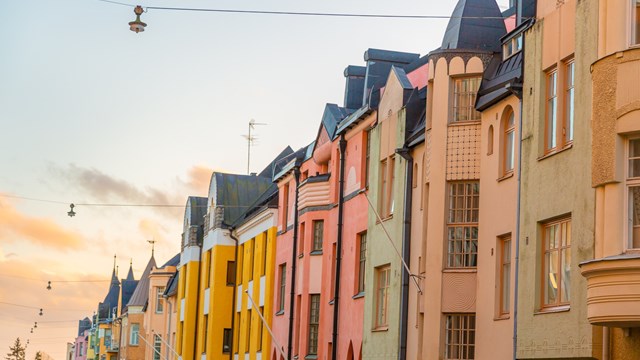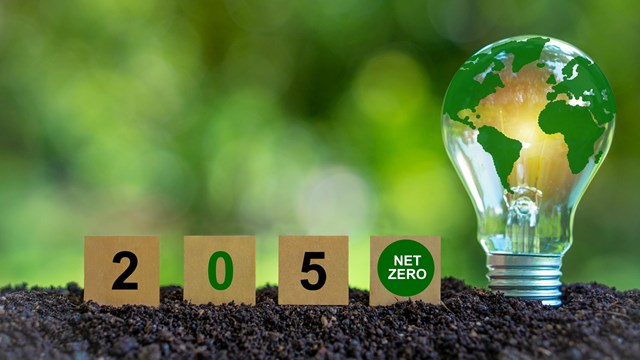You know that when one of the world’s most famous skyscrapers goes green, the future of energy efficient buildings has been changed forever. Earlier this year, it was announced that the Empire State Building would begin a $20 million retrofit of its iconic structure, leading to a 40 percent reduction in energy usage.
In addition to office buildings and landmarks such as the Empire State, thousands of residential buildings throughout Manhattan and the other four boroughs have followed suit with major “green” upgrades, thanks to government-funded programs and incentives that have made saving energy good for both the planet and the bottom line.
Sea Change
“Anyone who has eyes in their head has seen real progress in green buildings and energy in recent years,” says Nancy Anderson, executive director of The Sallan Foundation, a non-profit organization with a mission “to improve the urban environment by advancing useful knowledge for greener, high performance cities.”
The reasons behind this change are many, Anderson says. State and local legislators have enacted new measures, such as the requirement that municipal buildings and other buildings that get money from the city must meet LEED Silver standards. In addition, there have been state and local partnerships with non-profit organizations such as Enterprise and the Clinton Foundation to raise funds to build affordable green housing, while also securing the dollars necessary to help multi-family residential buildings, including co-ops and condos, become more energy efficient. Partnerships such as these have led to new building projects including recently announced affordable housing developments in the South Bronx. Specifically, the Forest Houses development, which will contain 100 affordable housing units will incorporate green, energy-saving design features and strategies throughout the building.
“Municipal innovators and early adopters, advocates, financiers, and property owners all see this as a responsible thing to do and also as good business,” Anderson says. “Property owners have begun to understand that there’s a measurable market value in energy efficient buildings.”
The shift in attitudes also may be attributed to one very practical and sobering reality: New York City is a coastal city. With climate change comes the potential for significant sea level increases. “Our subway, our telephone lines, our water are all very vulnerable,” Anderson says. “It wouldn’t take that much of a sea level rise to do significant damage. We know that here.”
What Can Be Done
Significant attention has been paid to residential buildings in recent years—not just in New York but all over the country—because of the key role they play in energy consumption. According to the U.S Department of Energy’s Energy Efficiency and Renewal division’s website, the United States has approximately 113 million residential buildings. Nationwide, residences accounted for 21 percent of primary energy consumption and 20 percent of carbon dioxide emissions.
The site goes on to say, “Of the millions of buildings in the U.S., most were built in 1979 and earlier, providing us the tremendous opportunity to reduce the nation’s energy consumption by increasing the efficiency of aging buildings through retrofits and replacements as needed.” The program’s ultimate goal is to produce “zero-energy” buildings, meaning buildings would produce as much energy as they use over the course of a year.
New York has helped lead the way in offering affordable and easy-to-engage programs for retrofitting as well as new construction. Through such programs as New York State Energy Research and Development Authority (NYSERDA)’s Energy Smart Communities, co-op and condo board members and managers have a place to go to ask questions and get started on moving their buildings forward. “Our goal is to reduce costs, reduce waste and increase efficiency in a whole building approach,” says Diana Pangestu, Energy Smart Communities coordinator. “There are no barriers to getting into our programs.”
Those programs are designed to help homeowners reduce their energy costs, help multi-family buildings become energy efficient, reduce the impact that residences have on the environment and provide training to contracts on how to provide quality energy efficient services to their neighbors and customers.
NYSERDA also offers the Multi-Family Performance Program, which “provides technical assistance and financial incentives to evaluate building use, loss of energy and the installation of energy saving measures,” says Luke Falk, project manager for the program. For co-op and condo communities that take part in the program, a consultant—called a “multi-family performance partner”—goes to the building and conducts an energy audit, then puts together a report and an energy reduction plan. The ultimate goal is to reduce energy consumption within the building by 20 percent.
Those reductions could be carried out a number of ways, including examining the building envelope—the walls, roofs, foundations, windows and doors—for soundness and efficiency, as well as assessing and upgrading equipment, like boilers or HVAC elements. Changes to lighting—such as installing motion sensors in rarely used rooms—can make a difference, as can balancing the ventilation system and making sure it works properly. “It’s really about doing the nuts-and-bolts things that are very common sense,” Falk says.
Reducing waste and increasing efficiency has an educational component as well, says Pangestu. Simply letting people know “to turn their lights off or install sensors,” can improve the bottom line for both individuals and the building as a whole, she says. “Most people don’t realize that DVR boxes, for example, consume as much energy as their refrigerator, or that you should unplug your cell phone chargers from the wall because they continue to draw energy even when you’re not using them.” Small changes and big changes all add up.
Going Green Saves Green
A key factor for those co-op and condo buildings hesitant to spend on capital improvements in these difficult economic times is that many incentive programs pay throughout the course of an upgrade project. Buildings don’t necessarily have to wait until the very end to see returns on their green investment.
“We pay money through the course of the improvement process,” Falk says, “and then a year later when the building has shown they’ve made that 20 percent reduction, we make a final incentive payment based on the size of the building.” For example, he says a building could get $5,000 to $10,000 to help pay for the audit, and then get $800 per apartment when the necessary energy reductions have been achieved.
Other financial incentives include extra funding for the installation of things such as solar panels, geothermal heating elements, or to install upgraded metering throughout the building. The New York Energy Smart Loan Fund provides a four percent interest rate reduction on loans buildings receive for doing cost-effective energy efficiency work to help cover whatever might not be covered by grants or other financial support. Other programs include rebates on electricity saving items such as lighting and Energy Star appliances. In fact, one program works to provide bulk discounts on energy efficient appliances, meaning that buildings that want to encourage their residents to participate in energy reductions can provide low-cost, affordable options for new appliances like refrigerators and dish washers.
Taking the Plunge
With so many incentives and programs in place to ease the transition into green living, more co-ops, condos and other residential buildings are moving forward with energy reduction efforts.
“The price of electricity and fuel has been a good motivator,” says Anderson. “The price of fuel is very volatile. The single best way to hedge against uncontrollable fluctuations is energy conservation and reduction.”
Anderson also feels that more co-op and condo communities are taking their first steps because they see so many other buildings doing it. “As more buildings take the plunge to fight climate change with energy efficiency, it’s no longer a matter of sailing off to an unknown continent or asking, ‘how do we do that?’ We’ve gotten to the point on the learning curve where we understand what works and what doesn’t work. There are engineers, contractors and folks in the supply chain who are doing it. You’re not going to be the first one out of the box.”
“The collective smarts are really starting to aggregate,” he adds. “It’s becoming a virtuous circle rather than a vicious circle.”
Many co-ops and condo administrators are beginning to see that there is a financial upside to going green beyond government subsidies and rebates. It’s a matter of cyclical savings as well. “By making these investments in our homes, it’s an investment that keeps on giving,” Anderson says. “Once you make it more efficient, it will be that way forever. It will save you money year in and year out. There aren’t many things that have a perpetual payoff like that.”
It’s also a matter of increasing property value. Co-ops and condos that have gone green appeal not only to environmentalists, but to potential apartment buyers as well. At a time when property values have become a subject near and dear to every homeowner, “Property owners have begun to understand that there is measurable market value” in energy efficient buildings, says Anderson.
NYSERDA agrees—which is why all buildings that achieve the 20 percent reduction in energy use are issued plaques that certify that accomplishment and label them as New York Energy Smart Buildings. That certification can be updated each year to show residents and potential buyers that the property is among the elite in energy efficiency.
To date, says Falk, response to the Multi-Family Performance Program has exceeded expectations. For the existing building program, more than 140,000 units have filed an application to take part with over 13,000 units in new construction. “There’s been an overwhelmingly robust response to the program,” he says.
For many co-op and condo buildings, it comes down to a matter of faith in what can be achieved. Some boards or managers might not believe that enough energy can be saved in their buildings to make the initial outlay worthwhile.
“Having looked at energy audits and evaluations for thousands of buildings and been responsible for managing hundreds of millions in capital improvements, I can tell you that there is a tremendous opportunity for every building to save a tremendous amount of energy,” Falk says. “Every building we’ve looked at has been able to save 20 percent. Even the most efficient buildings have been able to save.”
The technology and know-how is out there to make these changes happen, to save energy and to save money, says Anderson. “This is science now, not science fiction.”
Liz Lent is a freelance writer and a frequent contributor to The Cooperator.










Leave a Comment